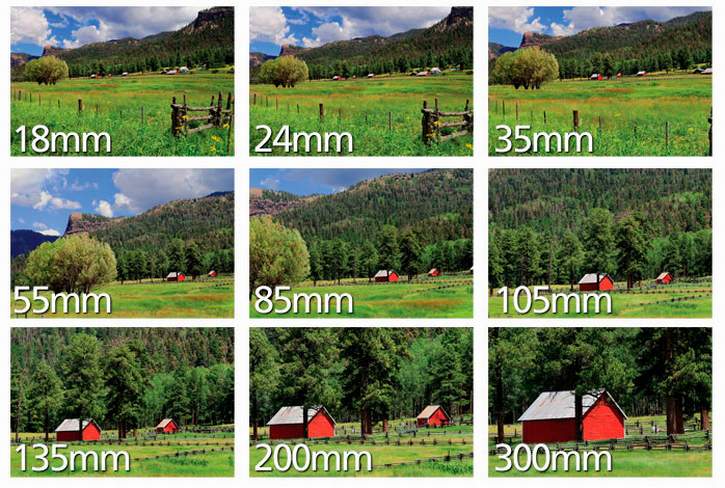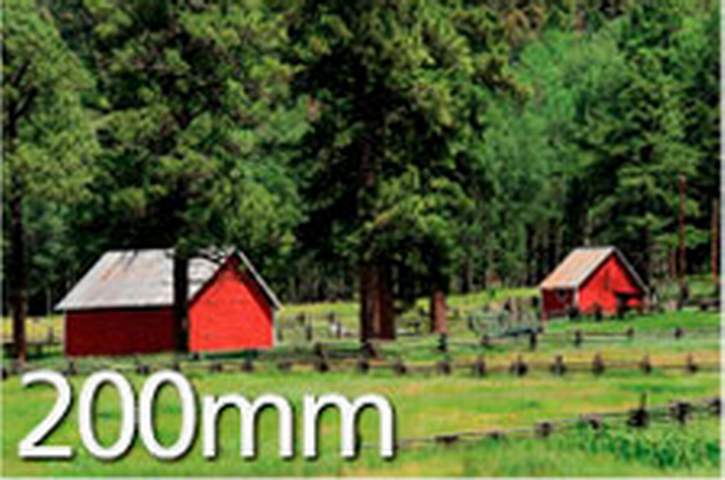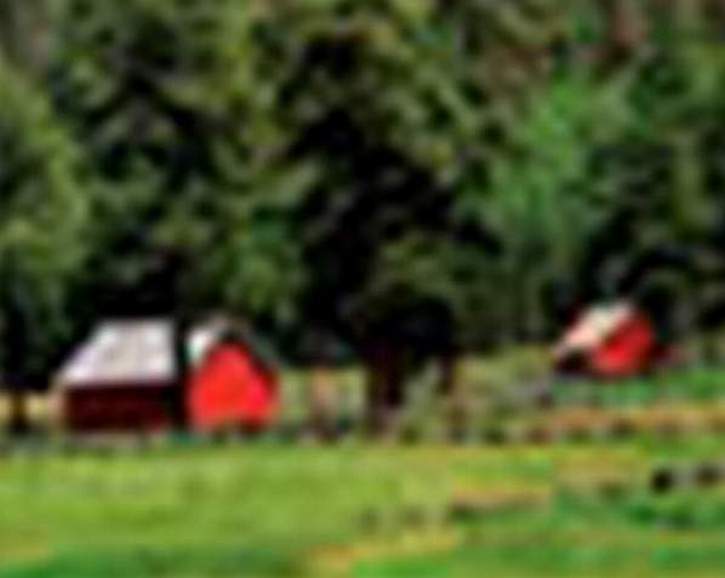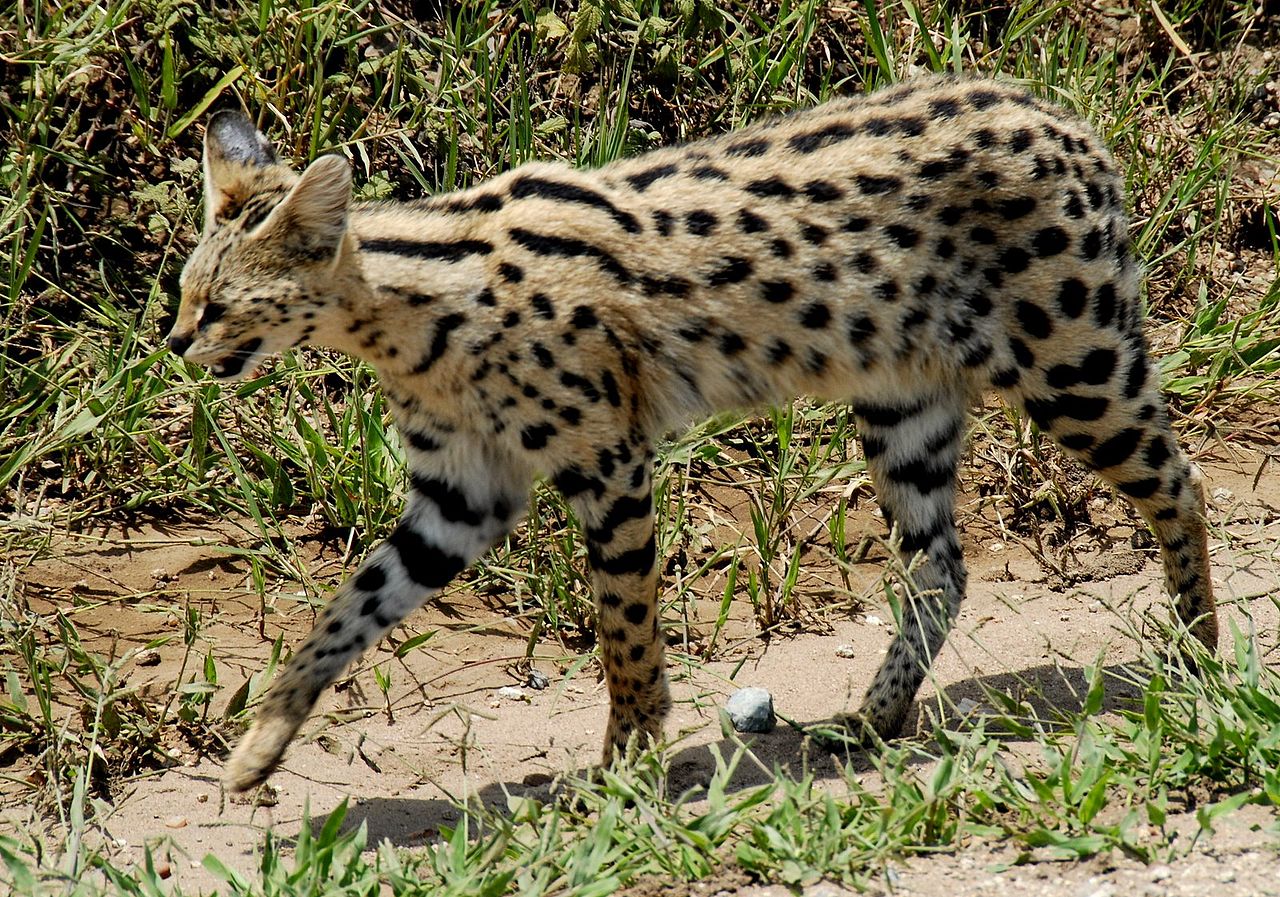Z.W. Wolf
Senior Member.
Re: This presentation by Shell Lee.

It's important to sort some things out.
These photos were taken on different days, but was the photographer standing in the same place on both days? Yes, I think so.
Why is that important? Because perspective distortion is caused by distance, not by the focal length of the lens.
Why is perspective distortion important? Because of how it affects the relative image size of two objects at different distances.
If one object is very close to the camera and one is very distant, there's a dramatic difference in image size.

But if both objects are distant from the camera, the image sizes don't differ as much.
Same lens... different distance.

Note that the image size of the car has changed quite a bit but the image size of the distant clouds hasn't changed enough to be noticeable. It's all about geometry. What if the car were hundreds of feet from the camera? How would the relative image sizes of the car and the clouds change?
In this telephoto shot, the cars are all distant from the camera. Even though the cars are quite distant from each other, the image sizes are not dramatically different. Telephoto shots look oddly flat. That's perspective distortion at work. But it's distance, not the lens. It's all about geometry.

These photos were taken from the same spot. The camera didn't move. Only the lenses are different.

I've isolated the 200 mm shot here

And here's a cropped and enlarged image from the 55mm lens shot.

The perspective distortion is just the same. It's distance not the lens. It's all about geometry
But notice how crappy the bottom photo looks. It's in focus; that's not the problem. But the resolution is crappy. That's the real reason we use telephoto lenses instead of just enlarging photos taken with a normal lens.
What's the difference between magnification and resolution?
A magnified image looks bigger. (okay)
But resolution is not about how big the image looks; it's how good it looks. Telescopes are built with big mirrors or lenses to gather more light. A little bitty three inch telescope might magnify at 300 power if you use a strong eyepiece, but the image can't compare to what you'd see through a ten inch telescope that also magnifies at 300 power. The three incher doesn't gather as much light; there isn't as much information. The image in a three incher would be in focus and it would be just as big, but the resolution would be low.
Why do we use telephoto lenses at all? We could just use a "normal lens" and just "blow up" and crop the photos we take. But if you blow up a photo, the resolution goes down. You're spreading out too little information too thin.
Now then, what's the difference between optical zoom and digital zoom? Optical zoom refers to changing the focal length of the lens. If you zoom in optically you're using a telephoto lens.
Digital zoom essentially means the camera is just electronically "blowing up" the image. The lens stays the same. You get a bigger image, but the resolution suffers. It's very much the same as in the example I present above.
Why is that important? Because in the original video taken in August of 2021, the photographer used digital zoom. In the still photo taken a few days later the photographer didn't use digital zoom. She just later blew up the photo. It's essentially the same process. The camera just let's you skip a step. That's why both photos of the cats in question have poor resolution.
Or, perhaps the Stamford Mercury enlarged and cropped the original video.
In the end, there's no significant optical difference. The perspective distortion is essentially the same, because the photographer was standing in the same place.
As presented by Shell Lee, the image of the "normal cat" is smaller than the image of the "black panther" even though the black panther is more distant. Checkmate, Skeptics.

As has been pointed out, this presentation is deceptive. We shouldn't talk about the zoom factor though. We should talk about how much each photo has been blown up. In the presentation by Shell Lee, the image of the purported black panther is blown up more than that of the normal cat. This may have been done unconsciously, or half-consciously. Lee had to manually enlarge the domestic cat photos, but didn't take care to do it properly.
It's a bit tricky to blow them up to the same degree, but that has been done here to a good approximation by Trailblazer. Well done, Trailblazer.
The images of the two cats are much the same size. It doesn't matter if they are the same domestic cat or two different domestic cats. Because of perspective distortion, the image size for both will be much the same, even though one is more distant.
And it doesn't matter how "muscular" or heavily built the purported black panther seems to be. Maybe that's what Shell Lee was trying to emphasize rather than image size. The image size is the decisive factor because it's a more easily measurable and extreme factor, rather than a heartfelt judgement.
If the more distant cat were truly a leopard, the image size of the leopard would have to be many times larger than that of the kitty... because a leopard is much bigger than a domestic cat. It would be a dramatic and unmistakable difference.
This telephoto shot is a good analogy.

The bus is bigger than the cars. The image size of the more distant bus is greater than the image size of the closer cars.
I think this is just one more false sighting. It's a dramatic story, but it doesn't hold up.
It's another case of a common issue in UFO sightings. Big and distant, or closer and smaller? If the witness is primed to see it as larger, the witness perceives it as larger. The big black panther makes for a more dramatic story, therefore the witness is primed to see the cat as big.
Just something to think about. In the Southwestern U.S., how many mountain lions are falsely perceived as kittys?
It's important to sort some things out.
These photos were taken on different days, but was the photographer standing in the same place on both days? Yes, I think so.
Why is that important? Because perspective distortion is caused by distance, not by the focal length of the lens.
Why is perspective distortion important? Because of how it affects the relative image size of two objects at different distances.
If one object is very close to the camera and one is very distant, there's a dramatic difference in image size.
But if both objects are distant from the camera, the image sizes don't differ as much.
Same lens... different distance.
Note that the image size of the car has changed quite a bit but the image size of the distant clouds hasn't changed enough to be noticeable. It's all about geometry. What if the car were hundreds of feet from the camera? How would the relative image sizes of the car and the clouds change?
In this telephoto shot, the cars are all distant from the camera. Even though the cars are quite distant from each other, the image sizes are not dramatically different. Telephoto shots look oddly flat. That's perspective distortion at work. But it's distance, not the lens. It's all about geometry.
These photos were taken from the same spot. The camera didn't move. Only the lenses are different.

I've isolated the 200 mm shot here

And here's a cropped and enlarged image from the 55mm lens shot.

The perspective distortion is just the same. It's distance not the lens. It's all about geometry
But notice how crappy the bottom photo looks. It's in focus; that's not the problem. But the resolution is crappy. That's the real reason we use telephoto lenses instead of just enlarging photos taken with a normal lens.
What's the difference between magnification and resolution?
A magnified image looks bigger. (okay)
But resolution is not about how big the image looks; it's how good it looks. Telescopes are built with big mirrors or lenses to gather more light. A little bitty three inch telescope might magnify at 300 power if you use a strong eyepiece, but the image can't compare to what you'd see through a ten inch telescope that also magnifies at 300 power. The three incher doesn't gather as much light; there isn't as much information. The image in a three incher would be in focus and it would be just as big, but the resolution would be low.
Why do we use telephoto lenses at all? We could just use a "normal lens" and just "blow up" and crop the photos we take. But if you blow up a photo, the resolution goes down. You're spreading out too little information too thin.
Now then, what's the difference between optical zoom and digital zoom? Optical zoom refers to changing the focal length of the lens. If you zoom in optically you're using a telephoto lens.
Digital zoom essentially means the camera is just electronically "blowing up" the image. The lens stays the same. You get a bigger image, but the resolution suffers. It's very much the same as in the example I present above.
Why is that important? Because in the original video taken in August of 2021, the photographer used digital zoom. In the still photo taken a few days later the photographer didn't use digital zoom. She just later blew up the photo. It's essentially the same process. The camera just let's you skip a step. That's why both photos of the cats in question have poor resolution.
Or, perhaps the Stamford Mercury enlarged and cropped the original video.
In the end, there's no significant optical difference. The perspective distortion is essentially the same, because the photographer was standing in the same place.
As presented by Shell Lee, the image of the "normal cat" is smaller than the image of the "black panther" even though the black panther is more distant. Checkmate, Skeptics.
As has been pointed out, this presentation is deceptive. We shouldn't talk about the zoom factor though. We should talk about how much each photo has been blown up. In the presentation by Shell Lee, the image of the purported black panther is blown up more than that of the normal cat. This may have been done unconsciously, or half-consciously. Lee had to manually enlarge the domestic cat photos, but didn't take care to do it properly.
It's a bit tricky to blow them up to the same degree, but that has been done here to a good approximation by Trailblazer. Well done, Trailblazer.
The images of the two cats are much the same size. It doesn't matter if they are the same domestic cat or two different domestic cats. Because of perspective distortion, the image size for both will be much the same, even though one is more distant.
And it doesn't matter how "muscular" or heavily built the purported black panther seems to be. Maybe that's what Shell Lee was trying to emphasize rather than image size. The image size is the decisive factor because it's a more easily measurable and extreme factor, rather than a heartfelt judgement.
If the more distant cat were truly a leopard, the image size of the leopard would have to be many times larger than that of the kitty... because a leopard is much bigger than a domestic cat. It would be a dramatic and unmistakable difference.
This telephoto shot is a good analogy.
The bus is bigger than the cars. The image size of the more distant bus is greater than the image size of the closer cars.
I think this is just one more false sighting. It's a dramatic story, but it doesn't hold up.
It's another case of a common issue in UFO sightings. Big and distant, or closer and smaller? If the witness is primed to see it as larger, the witness perceives it as larger. The big black panther makes for a more dramatic story, therefore the witness is primed to see the cat as big.
Just something to think about. In the Southwestern U.S., how many mountain lions are falsely perceived as kittys?
Last edited:

